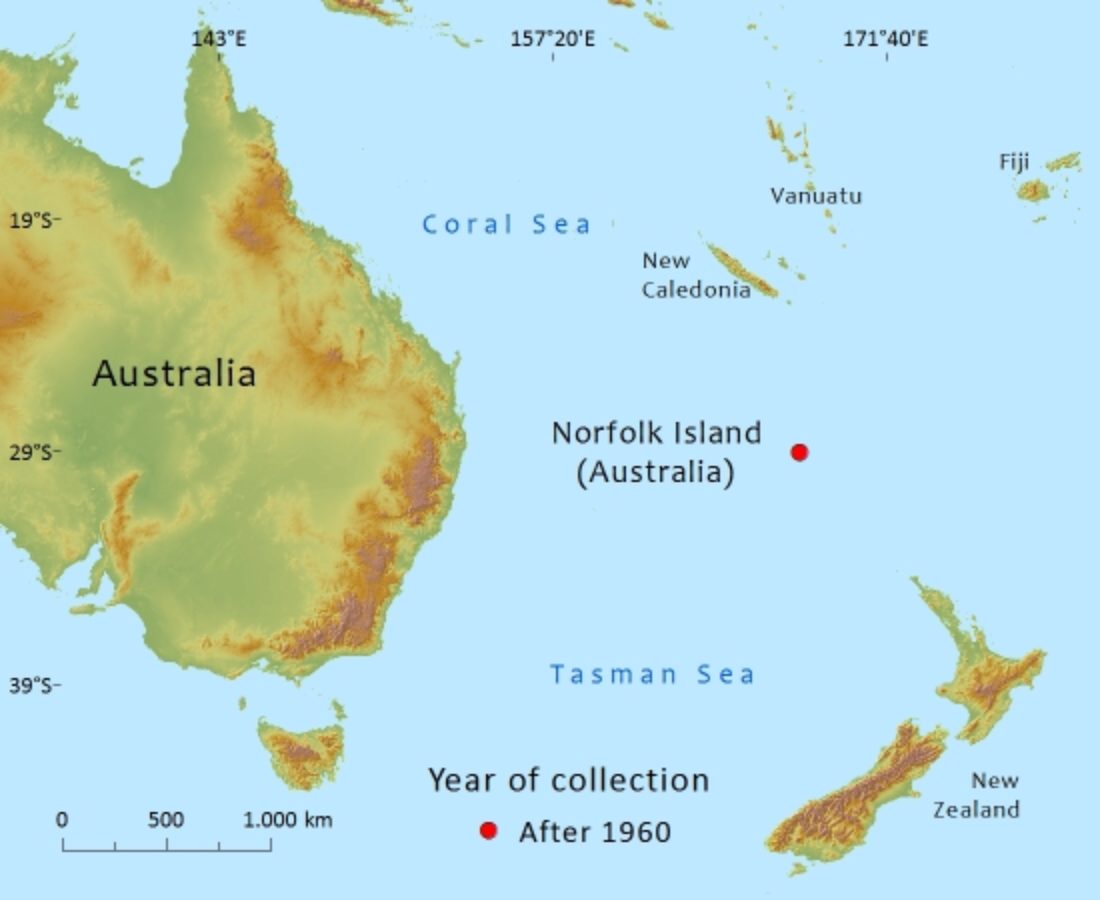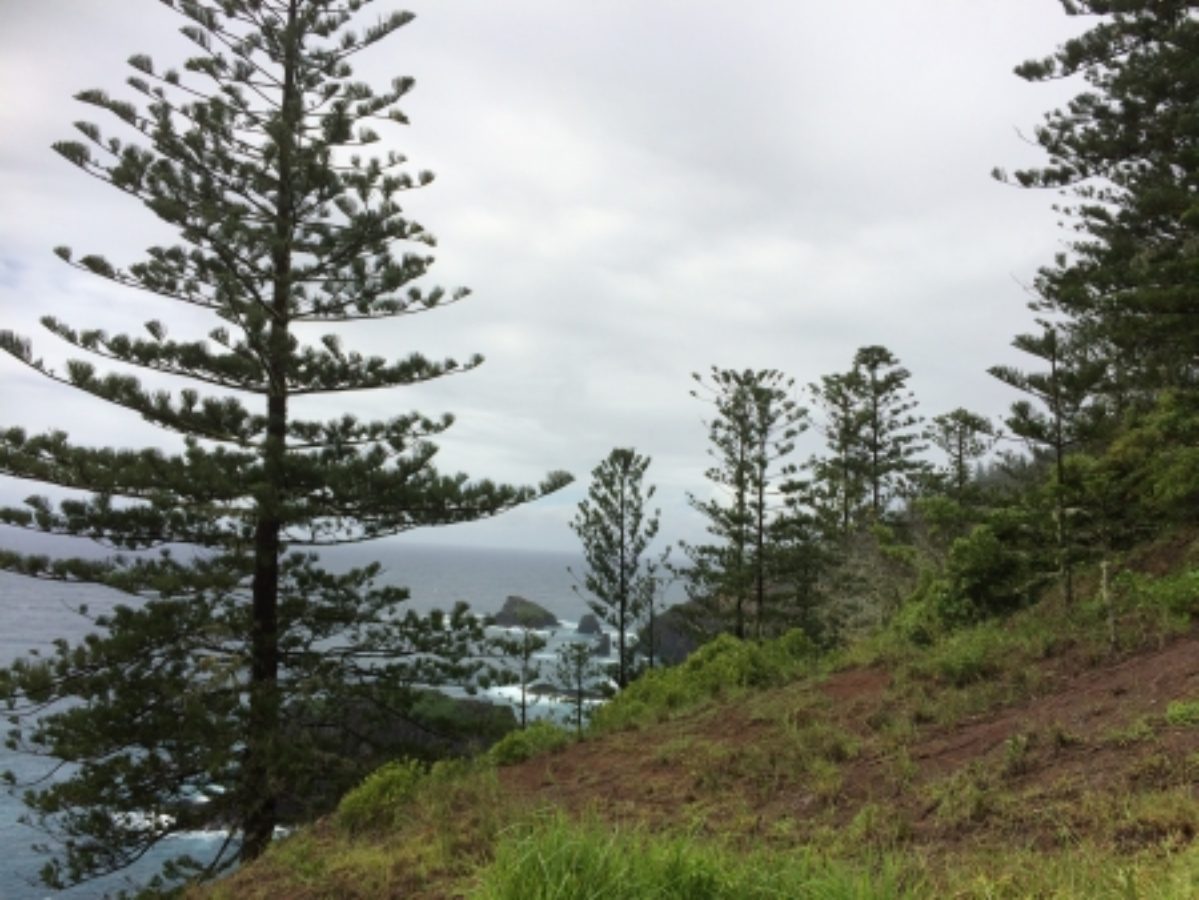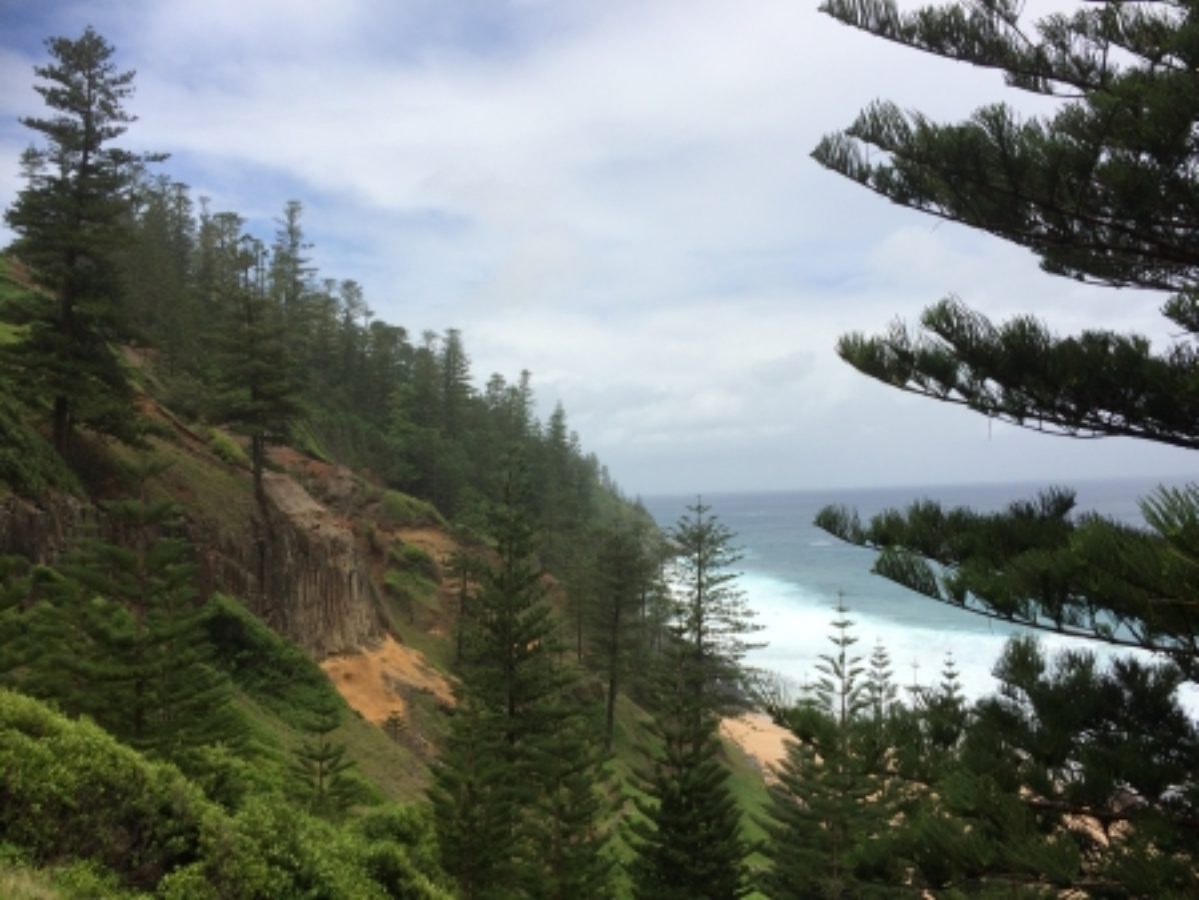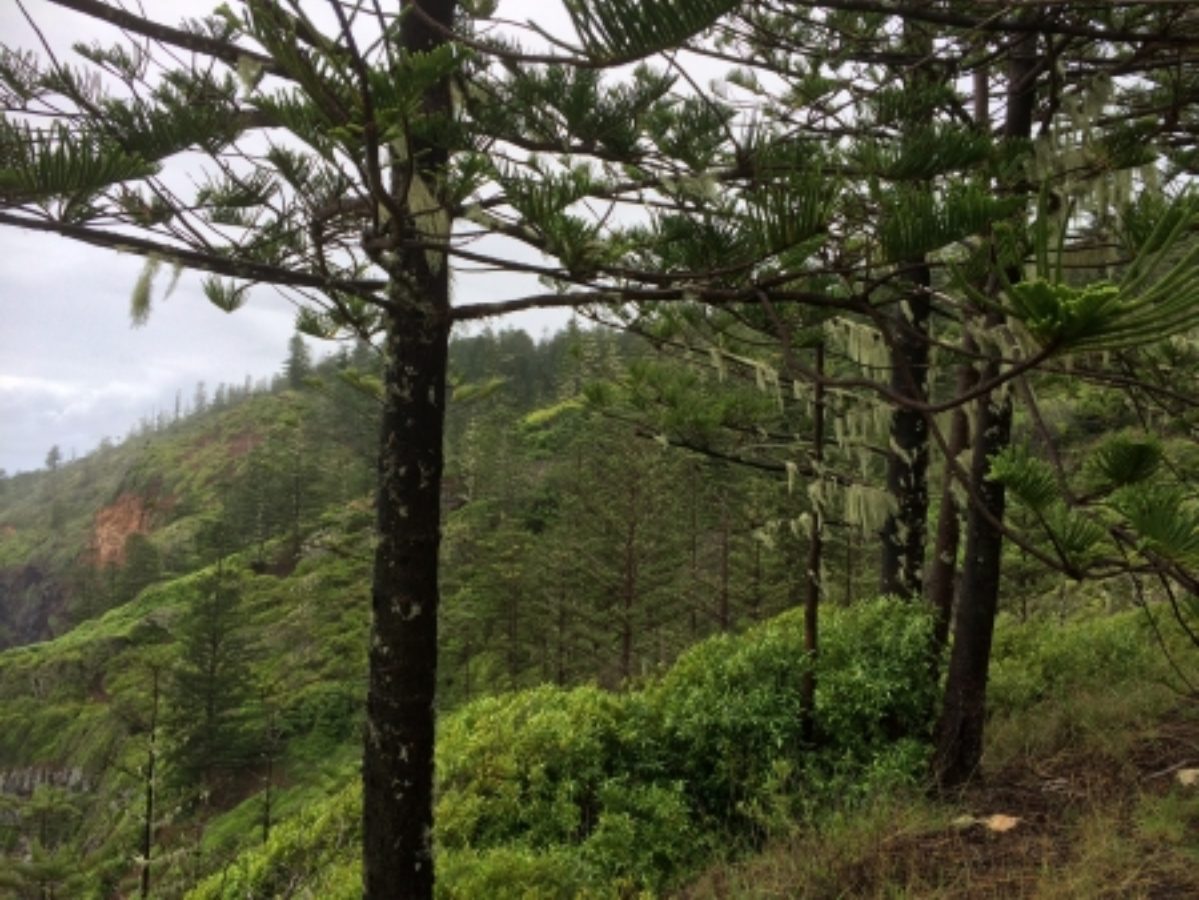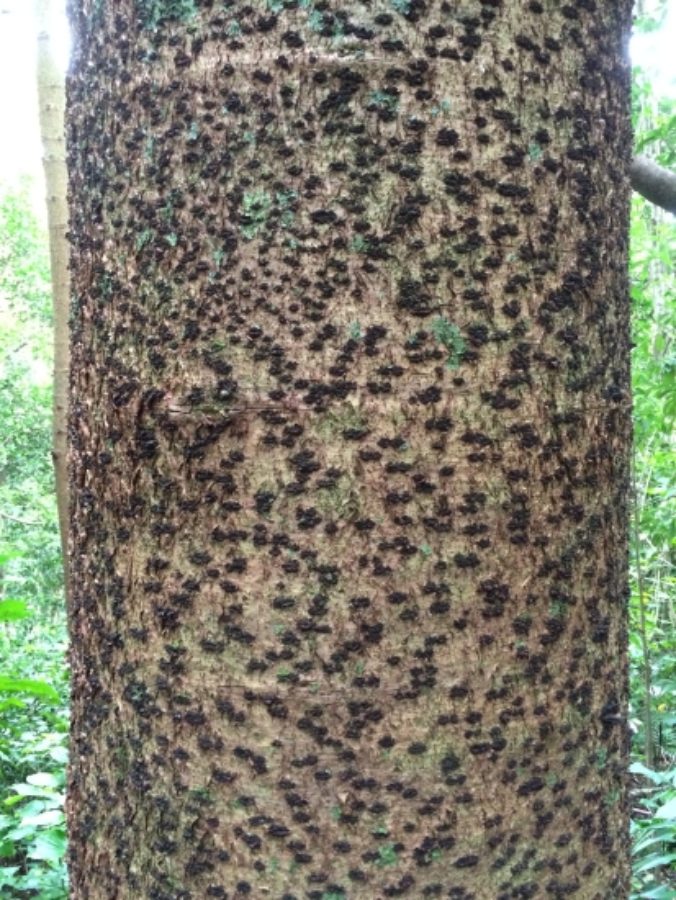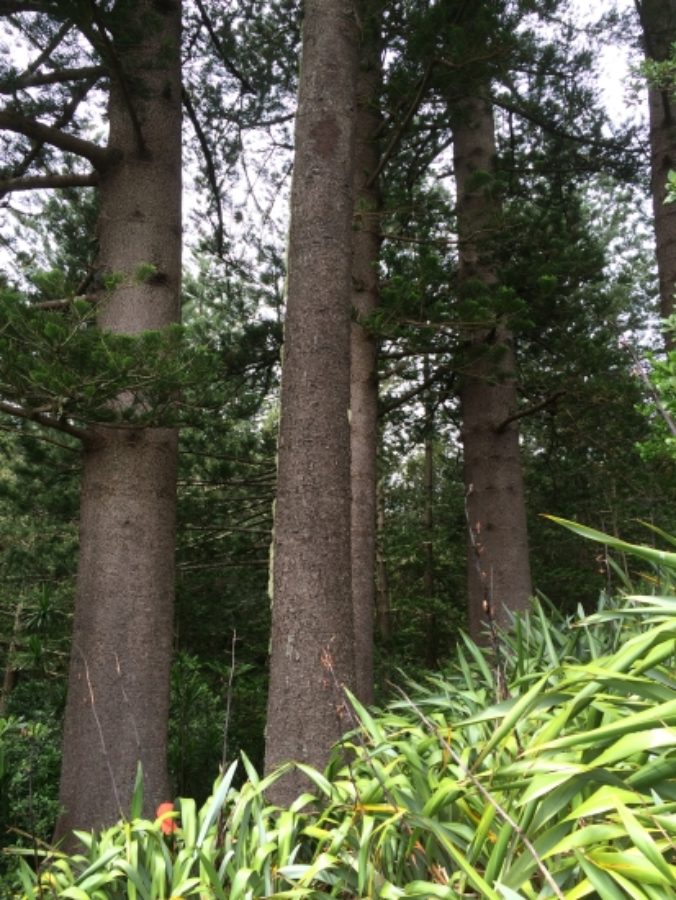Distribution
Endemic to three islands that make up Norfolk Island (Australia) which includes Norfolk Island itself, and the two nearby islands of Phillip Island and Nepean Island. On Norfolk Island itself, natural forests are largely restricted to the Mt Pitt (316m) area within the Norfolk Island National Park. On Phillip Island, a 4km² small island 6km south of Norfolk Island, the natural vegetation was largely destroyed by rabbits and other introduced animals by the 1970s and almost all Araucarias were lost. There are also historical records of its presence on the tiny limestone island of Nepean (10.5ha) off the south coast of Norfolk Island. In the early 1790s, about 200 mature trees grew there but by 1840 these had been reduced to one live and one dead tree; these appear to have persisted in some state until the late 1930s (Norfolk Island Parks and Forestry Service 2003). Currently there are no Araucarias on this small island.
The total extent of occurrance (EOO) is less than 100km². The main natural stands on Mt Pitt cover an area of less than 400 hectares giving a minimum area of occupancy (AOO) (using standard IUCN 4km² grid cells) of 4km². Fragments of natural stands also occur in other parts of the island so that the total AOO would be more than 10km². However, it cannot be more than 38km² as this is the combined total area of both Norfolk Island and Phillip Island.
Prior to the arrival of European settlers in 1788, Araucaria-dominated forests occurred in almost all parts of Norfolk, Nepean and Phillip Islands. Over the last two centuries the vast majority of the native vegetation has been cleared or degraded so that less than 10% remains. However, this does not equate to a similar reduction in the size of the Araucaria population as during this period, sporadic natural regeneration has occurred in areas not subject to grazing. Additionally, many trees and groves have been planted and some of these have become self maintaining (e.g. Hundred Acres Reserve).
Habitat and Ecology
The original vegetation on Norfolk Island was an evergreen subtropical forest with angiosperm trees and tree ferns 10–20m high, over which A. heterophylla emerged at least 30m and occasionally taller. The really large trees have all been felled, but evidence of trees with a diameter at breast height (d.b.h.) of around 3m still existed in the 1920s and large trees have now again reached in excess of 1m d.b.h. and 35–45m in height. Common angiosperm trees are (were) Olea apetala , Elaeodendron curtipendulum, Celtis paniculata, Streblus pendulinus, Lagunaria patersonia, Acronychia simplicifolia, Zanthoxylum blackburnia, Rhopalostylis baueri, Meryta angustifolia, Baloghia inophylla, Dysoxylum patersoni as well as the tree ferns Cyathea australis and C. brownii. This type of forest is now fragmented and very restricted in its distribution on Norfolk Island. Araucaria heterophylla also persists as solitary trees on coastal headlands or in groves with a low undergrowth of mostly grasses or of open scrub, with many introduced species.
